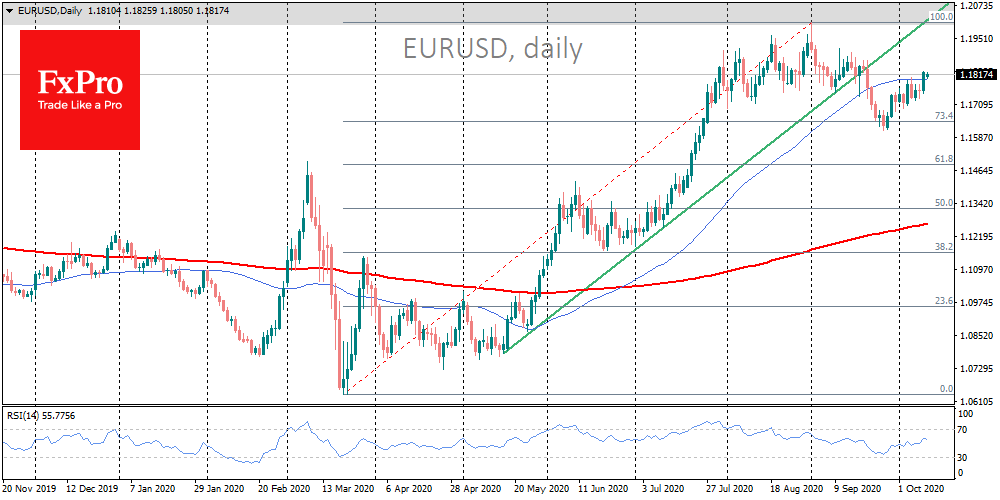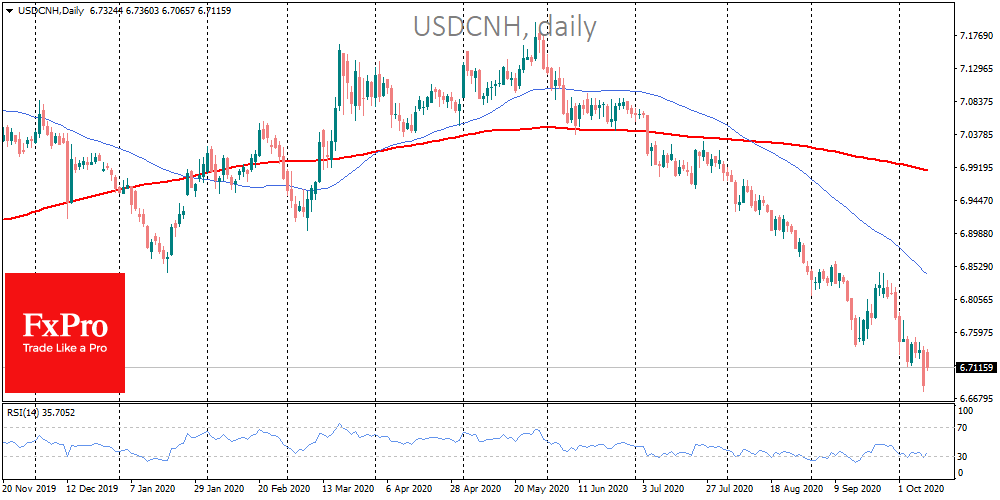World Central Banks are strengthening measures to keep the dollar from falling
October 12, 2020 @ 12:01 +03:00
The stock markets strengthened their ascent on Friday. Asian markets opened a new week near the two-year peaks in the MSCI Asia Pacific Index, thanks to a 2% jump in the Chinese indices after a week of local holidays.

Demand for risk assets dragged the dollar down. On Friday, EURUSD went up above 1.1800 while GBPUSD surpassed 1.3000 and USDCHF sank to 0.9100. The dollar index came back to 93.00, from where it made a jump in September on the strengthening of corrective sentiment in the markets.
The dollar may not experience any critical obstacles if it remains above its early September levels. A return of EURUSD, GBPUSD to recent local highs may raise the question of whether other countries’ authorities will be comfortable with their currencies strengthening.
China, for example, has begun taking measures to curb the growth of its currency since returning from the holidays. The People’s Bank of China made it easier to short the Chinese currency, which caused an impulse drop at the start of trading. Before that, between late May and last Friday, USDCNH fell by 7.2%, plunging from multi-year highs to lows not seen since early 2019.

Over the last two years, the People’s Bank of China kept the currency from falling uncontrollably by asking financial institutions to set aside cash when purchasing foreign exchange. However, it has now made a complete policy reversal and wants to keep the yuan from growing. For China, exports are an important driver of the economy, so keeping competitive prices for Chinese goods is a matter of survival for the world’s second-largest economy.
To a lesser extent, this rule also applies to European currencies – the euro, the franc, and the pound – where central banks also keep exchange rate movements under control to keep their economies competitive.

This means that it is now worth keeping a close eye on how the European authorities will react to the weakening of the dollar against their currencies above 1.2000 per euro and 1.3500 per pound. If it is sustained, we should expect even more easing in monetary policy.
The Bank of England and the ECB have already indicated that they are ready for new measures. The UK is studying the possibility of introducing negative rates as BoE has asked commercial banks if they are technically prepared for this step. In the Eurozone, there is a discussion for the expansion of support programmes and QE that may weaken the national currency.
It may well turn out that in Europe there is no hesitation to fundamentally change policy, knowing that half measures will only mitigate growth but will not reverse the euro and pound.
The FxPro Analyst Team







